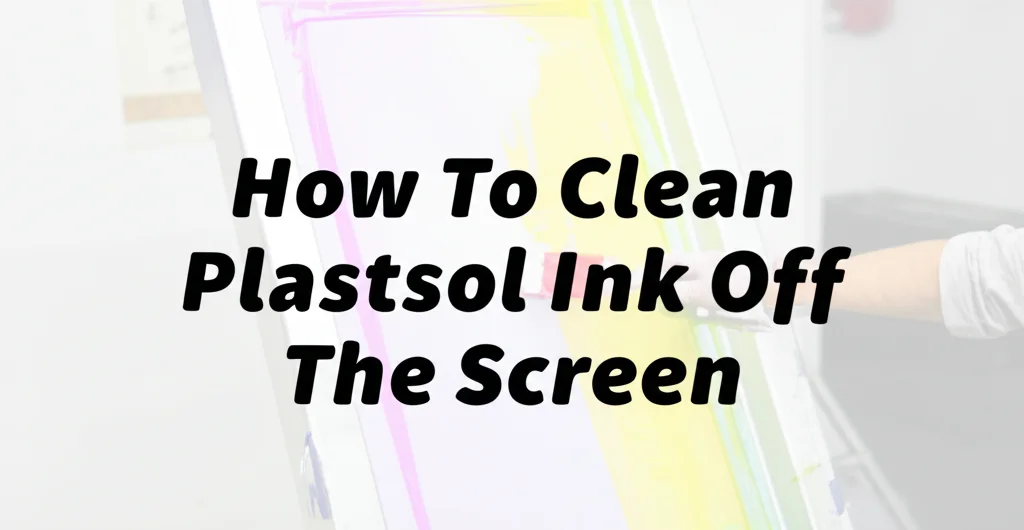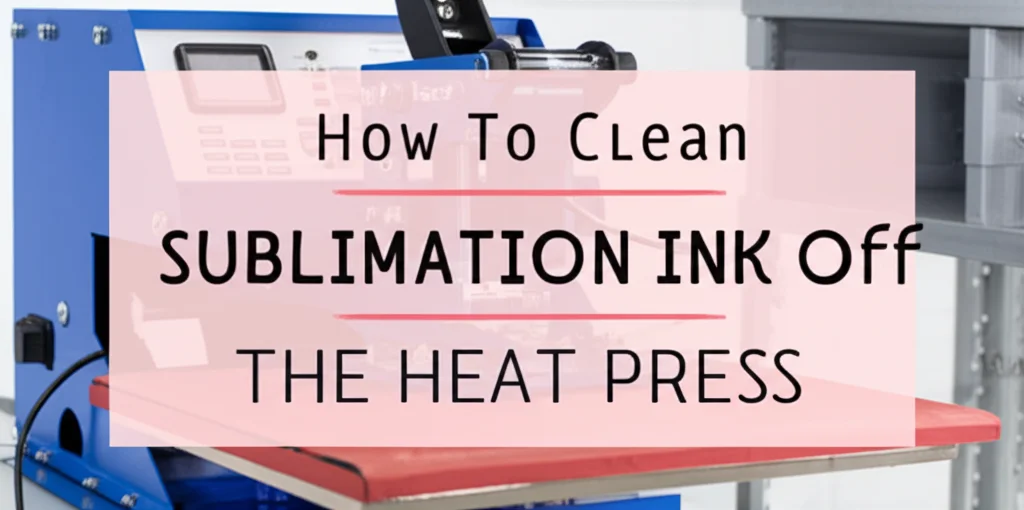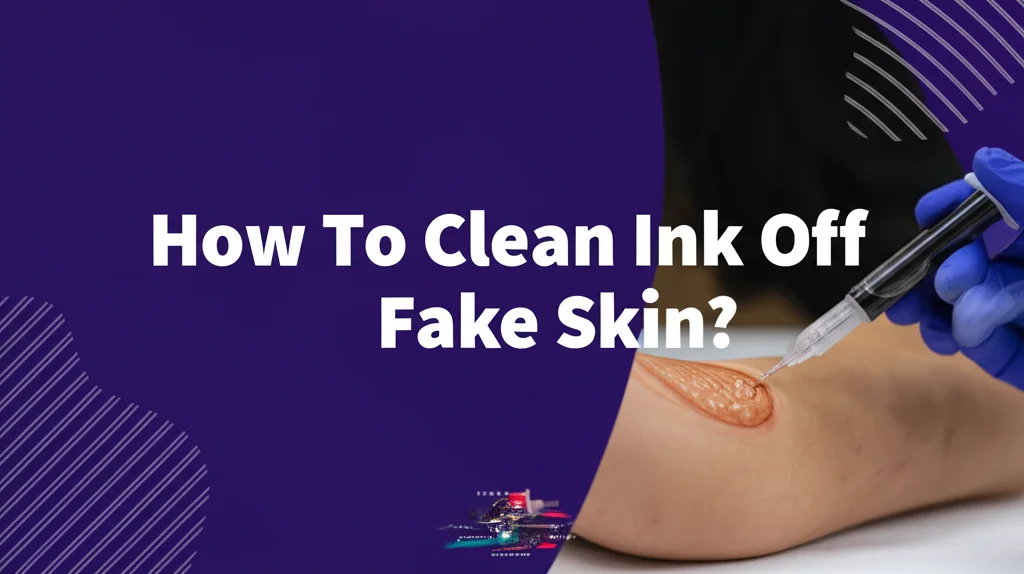· Screen Printing · 7 min read
How To Clean Plastisol Ink Off The Screen

How To Clean Plastisol Ink Off The Screen: A Comprehensive Guide
Ever wondered how to get that stubborn plastisol ink off your screen printing screen? It’s a common challenge for screen printers, but thankfully, it’s a solvable one. Cleaning plastisol ink effectively is crucial for maintaining print quality and extending the life of your screens. This article will walk you through everything you need to know about removing plastisol ink, from the necessary supplies to step-by-step instructions, and even preventative measures. We’ll cover various methods, ensuring you find the best approach for your setup and budget.
Takeaway:
- Proper cleaning prevents ghost images and ensures sharp prints.
- Using the right cleaning supplies is essential for effective ink removal.
- Regular maintenance extends the life of your screens and saves money.
- Preventative measures can minimize ink buildup and simplify cleaning.
Quick Answer:
To clean plastisol ink off a screen, use a plastisol ink remover, apply it to the printed side of the screen, let it dwell, and then wash it away with water. A scoop coater helps apply the remover evenly, and a pressure washer can speed up the rinsing process.
Understanding Plastisol Ink and Why Cleaning Matters
Plastisol ink is a popular choice for screen printing due to its durability and vibrant colors. However, its very properties – its thickness and resilience – make it challenging to remove once it’s dried on your screen. Leftover ink can lead to “ghost images” in subsequent prints, where faint outlines of previous designs appear. This significantly impacts print quality and can render a screen unusable. Regular and thorough cleaning is therefore not just about aesthetics; it’s about maintaining a professional standard and maximizing your investment in screen printing equipment. Ignoring this step can lead to costly screen replacements and wasted time.
Essential Supplies for Cleaning Plastisol Ink
Before you begin, gather the necessary supplies. Having everything on hand will streamline the process and ensure a more efficient clean. Here’s a checklist of what you’ll need:
- Plastisol Ink Remover: This is the most important item. Choose a remover specifically designed for plastisol ink.
- Scoop Coater: A scoop coater helps apply the ink remover evenly across the screen.
- Spray Bottle: For applying water to rinse the screen.
- Pressure Washer (Optional): A pressure washer significantly speeds up the rinsing process, especially for larger screens.
- Scrub Brush: A soft-bristled scrub brush can help loosen stubborn ink. Avoid abrasive brushes that can damage the mesh.
- Spray Booth or Well-Ventilated Area: Ink removers can have strong fumes, so work in a well-ventilated space.
- Gloves & Eye Protection: Protect your skin and eyes from the chemicals in the ink remover.
- Dark Bucket: A dark-colored bucket helps you see the removed ink and assess the cleaning progress.
Step-by-Step Guide to Cleaning Plastisol Ink
Now that you have your supplies, let’s get to the cleaning process. Follow these steps for optimal results:
- Remove Excess Ink: Before applying the remover, scrape off any excess wet ink from the screen using a squeegee. This reduces the amount of remover needed and makes the process easier.
- Apply Ink Remover: Using a scoop coater, apply a generous, even layer of plastisol ink remover to the printed side of the screen. Ensure the entire inked area is covered.
- Dwell Time: Allow the ink remover to dwell for the recommended time specified on the product label. This is crucial for the remover to break down the ink. Dwell times can vary from 5 to 30 minutes, depending on the remover and the thickness of the ink.
- Scrub (If Necessary): If the ink is particularly stubborn, gently scrub the screen with a soft-bristled brush. Avoid excessive force, as this can damage the mesh.
- Rinse Thoroughly: Rinse the screen thoroughly with water. A pressure washer is highly recommended for this step, as it provides a powerful and efficient rinse. Ensure all traces of ink remover are removed.
- Inspect and Repeat: Inspect the screen for any remaining ink. If necessary, repeat the process until the screen is completely clean.
- Dry the Screen: Allow the screen to dry completely before storing it.
Alternative Cleaning Methods for Plastisol Ink
While plastisol ink remover is the most effective method, there are alternative options you can consider. These may be useful for smaller jobs or when you’re in a pinch.
- Citrus-Based Cleaners: Some citrus-based cleaners can help break down plastisol ink, but they may require longer dwell times and more scrubbing.
- Dish Soap and Water (For Fresh Ink): If the ink is still wet, you may be able to remove it with warm water and dish soap. However, this method is not effective for dried ink.
- Screen Wash (For Emulsion): While not specifically for plastisol, a good screen wash can help remove residual ink and emulsion during a full screen reclamation process. You can learn more about screen reclamation here.
Preventing Ink Buildup: Best Practices
Preventing ink buildup is just as important as knowing how to clean it. Here are some best practices to minimize ink accumulation on your screens:
- Proper Off-Contact: Ensure proper off-contact between the screen and the substrate. This prevents the ink from smearing and building up on the screen.
- Consistent Squeegee Pressure: Maintain consistent squeegee pressure throughout the print run. Uneven pressure can lead to ink buildup in certain areas.
- Regular Screen Maintenance: Clean your screens after each print run, even if they don’t appear heavily soiled. This prevents ink from drying and becoming more difficult to remove.
- Use a Screen Filler: Applying a screen filler can help reduce the amount of ink that passes through the mesh, minimizing buildup.
- Proper Ink Storage: Store your plastisol ink properly to prevent it from drying out and becoming more difficult to work with.
Reclaiming Screens: A Deeper Clean
Sometimes, a simple cleaning isn’t enough. If your screen is heavily clogged or has damaged emulsion, you’ll need to reclaim it. Screen reclamation involves removing the emulsion and thoroughly cleaning the screen to restore it to its original condition. This process typically involves using an emulsion remover, followed by a thorough cleaning with plastisol ink remover and a pressure washer. A reclaimed screen is essentially a blank canvas, ready for a new design. You can find more information on reclaiming screens and maintaining your equipment here.
FAQ: Common Questions About Cleaning Plastisol Ink
- How often should I clean my screens? Clean your screens after every print run, even if they don’t look dirty. This prevents ink from drying and becoming harder to remove.
- Can I use a harsh solvent like acetone to clean plastisol ink? No, acetone can damage the screen mesh and is not recommended. Always use a plastisol ink remover specifically designed for screen printing.
- What if the ink remover isn’t working? Ensure you’re using enough remover and allowing it to dwell for the recommended time. You may also need to gently scrub the screen with a soft-bristled brush.
- Is it safe to dispose of ink remover down the drain? No, ink remover is a chemical waste and should be disposed of properly according to local regulations. Check the product label for disposal instructions.
- How can I tell if my screen is completely clean? Hold the screen up to a light source. If you see any remaining ink or haze, repeat the cleaning process.
Conclusion: Maintaining Your Screens for Long-Term Success
Cleaning plastisol ink off your screen printing screens is a vital part of the process. By following the steps outlined in this guide, you can ensure optimal print quality, extend the life of your screens, and save money in the long run. Remember to always use the appropriate cleaning supplies, prioritize safety, and adopt preventative measures to minimize ink buildup. Investing a little time and effort in screen maintenance will pay dividends in the form of consistent, high-quality prints. Don’t let stubborn ink ruin your designs – take control and keep your screens clean! For more cleaning tips and solutions, explore our other articles here.




